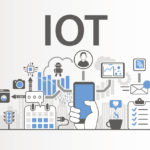In our last post, Top Innovations in the History of the Manufacturing Industry (Until Now), we took a quick tour of our industry’s impressively innovative and ingenious history. So, where are we today? The manufacturing industry stands on the precipice of an era filled with MORE possibilities, MORE inventions, MORE applications, MORE productivity, and MORE profitability than ever before. It’s an exciting time, ripe with opportunities. And, we at Sonaria are prepared to share everything we’ve learned (and developed) to help your manufacturing organization prosper. A quick look at what’s ahead as we delve into Industry 4.0:
- The Internet of Things (IoT) and the Industrial Internet of IIoT
- Manufacturing solutions that allow systems to share and analyze data
- Guided (or intelligent or smart) technology applications
- Cutting-edge additive manufacturing, robotics, artificial intelligence, and more
- Solutions-as-a-Service that make transition and implementation seamless (and affordable)
For now, let’s explain Industry 4.0, IoT and IIoT.
You’re busy running a manufacturing organization, which means you’ve got a lot on your plate. And, while you’re good at staying up-to-date on all things that might affect your business (clearly, or you wouldn’t be reading this), it’s sometimes challenging to keep up with all of the new tech terms – and even some of those that have been around awhile. We picked THREE terms that you’ve already heard, but may not feel entirely well-versed on their definitions. And, here’s what – we’re still going to keep them brief. Our goal is to keep things moving quickly, so you can get back to your business at hand: growing it.
Industry 4.0
The current trend of automation and data exchange in manufacturing technologies. It includes cyber-physical systems (we’ll save that for another time), the Internet of Things (IoT … we’ll hit that next), cloud computing and cognitive computing.
Source: Industry 4.0 – Wikipedia
https://en.wikipedia.org/wiki/Industry_4.0
Internet of Things
Andrew Meola from Business Insider (May 10, 2018 1:06 pm) gives one of the easiest to digest definitions, so we’ll work with his.
“The Internet of Things, commonly abbreviated as IoT, refers to the connection of devices (other than typical fare such as  computers and smartphones) to the Internet. Cars, kitchen appliances, and even heart monitors can all be connected through the IoT. And, as the Internet of Things grows in the next few years, more devices will join that list.”
computers and smartphones) to the Internet. Cars, kitchen appliances, and even heart monitors can all be connected through the IoT. And, as the Internet of Things grows in the next few years, more devices will join that list.”
It’s likely many of you are already using IoT in your homes – such as the doorbell/network surveillance app. We think those applications are pretty “cool,” but at Sonaria, our focus is centered on IoT for our industry,
Industrial Internet of Things
The industrial internet of things, or IIoT, refers to the internet of things technologies that specifically integrate with manufacturing and industrial processes. As you might imagine, this is much MORE than a “tech term” for Sonaria. As your trusted systems integrator, our mission is to help you leverage IoT technology to transform your organization to Industry 4.0. Do we have an app for that? You bet!
Next up – much MORE about IIoT, what it can mean for your business, and how we can help you achieve it.
Industry 4.0 is here. It’s now. And, you can count on our partner, Lowry Solutions, to help you transform your business to it. Contact them today to see how Sonaria can help your business jump into Industry 4.0

